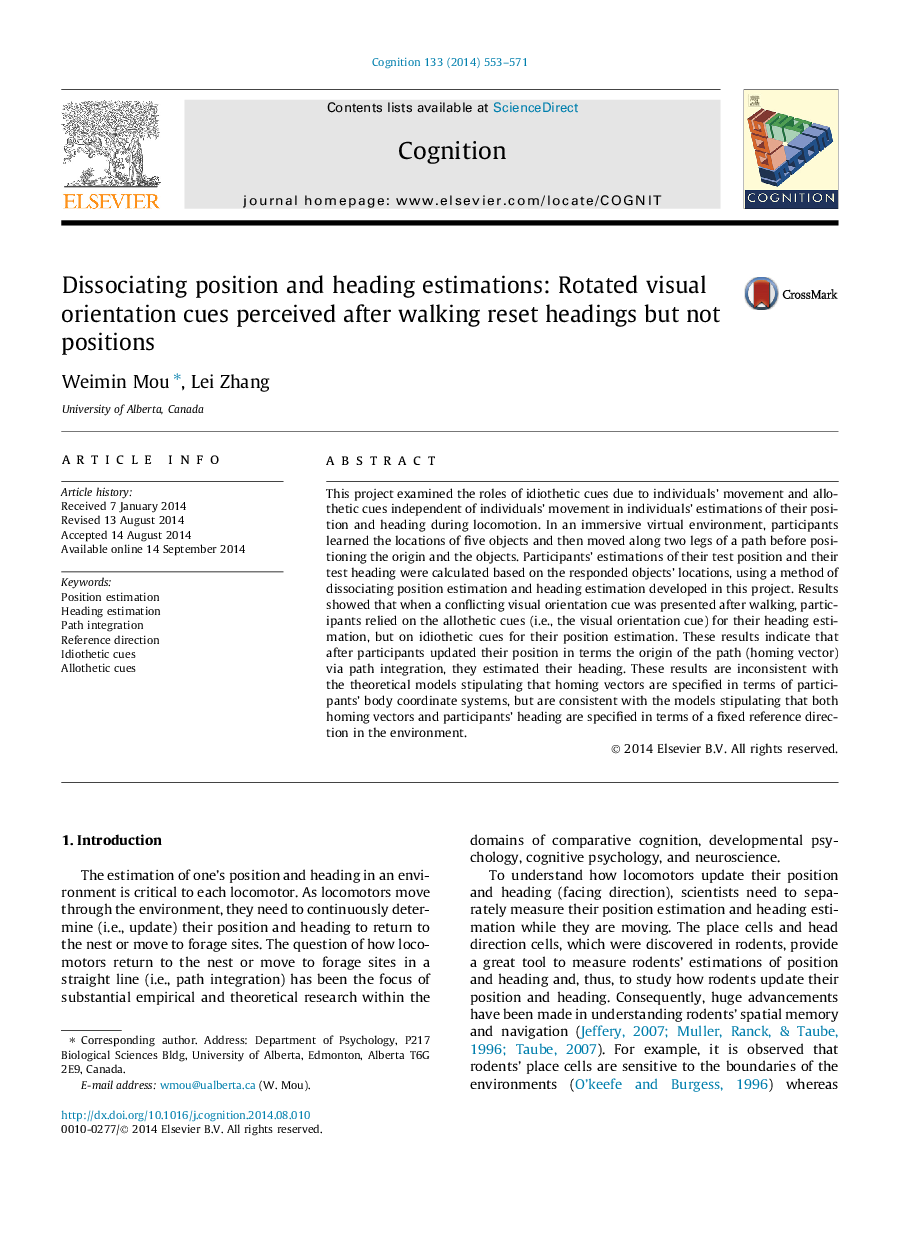| Article ID | Journal | Published Year | Pages | File Type |
|---|---|---|---|---|
| 926357 | Cognition | 2014 | 19 Pages |
•We introduce a behavioral method to dissociate estimates of position and heading.•Conflicting visual orientation cues can change the heading estimation but not the position estimation.•Individuals update their position from the origin in terms of a reference direction in the environment.
This project examined the roles of idiothetic cues due to individuals’ movement and allothetic cues independent of individuals’ movement in individuals’ estimations of their position and heading during locomotion. In an immersive virtual environment, participants learned the locations of five objects and then moved along two legs of a path before positioning the origin and the objects. Participants’ estimations of their test position and their test heading were calculated based on the responded objects’ locations, using a method of dissociating position estimation and heading estimation developed in this project. Results showed that when a conflicting visual orientation cue was presented after walking, participants relied on the allothetic cues (i.e., the visual orientation cue) for their heading estimation, but on idiothetic cues for their position estimation. These results indicate that after participants updated their position in terms the origin of the path (homing vector) via path integration, they estimated their heading. These results are inconsistent with the theoretical models stipulating that homing vectors are specified in terms of participants’ body coordinate systems, but are consistent with the models stipulating that both homing vectors and participants’ heading are specified in terms of a fixed reference direction in the environment.
